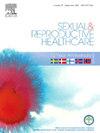Correlates of very early sexual intercourse among adolescents in a Southeastern European country
IF 1.7
3区 医学
Q3 PUBLIC, ENVIRONMENTAL & OCCUPATIONAL HEALTH
引用次数: 0
Abstract
Background
Early sexual intercourse can lead to increased risks of unintended pregnancies, and negative impacts on adolescents’ health. Our aim was to assess the prevalence and correlates of very early sexual intercourse (≤14 years) among adolescents in a Southeastern European country undergoing rapid transformations.
Methods
We carried out a cross-sectional study in Albania in 2022, which included a nationally representative sample of 1877 schoolchildren aged 15 years (about 55 % girls; overall response: ≈96 %). Data collection included age of commencement of sexual intercourse (if applicable) and important determinants of early sex comprising behavioural factors, health characteristics, child maltreatment indices and sociodemographic factors. Logistic regression assessed the association of very early sexual intercourse with covariates.
Findings: Among 321 schoolchildren with lifetime sexual intercourse who also reported on age of commencement (≈17 % of the total), the prevalence of very early (≤14 years) sexual intercourse was ≈53 %. It was more prevalent in boys (P = 0.01), in children from more affluent families (P = 0.06), among lifetime smokers (P = 0.02), in children who never/rarely felt low (P = 0.06), and in children who reported lifetime physical abuse (P = 0.06), or lifetime sexual abuse (P = 0.10). In multivariable-adjusted logistic regression models, independent significant positive correlates of very early sexual intercourse included family affluence (OR = 1.8, 95 %CI = 1.0–3.1) and lifetime physical abuse (OR = 2.1, 95 %CI = 1.2–3.6).
Conclusion
Our study evidenced a substantial prevalence of very early sexual intercourse, especially among male adolescents, which is a cause of concern. Interventions should address child maltreatment and promote healthy family environments, alongside comprehensive sexual education tailored to the developmental needs of adolescents.
一个东南欧国家青少年过早性交的相关因素
背景:频繁的性交会增加意外怀孕的风险,并对青少年健康产生负面影响。我们的目的是评估一个正在经历快速转型的东南欧国家青少年中过早性行为(≤14岁)的患病率及其相关因素。方法我们于2022年在阿尔巴尼亚进行了一项横断面研究,其中包括具有全国代表性的1877名15岁学童(约55%为女孩;总有效率:≈96%)。收集的数据包括开始性交的年龄(如适用)和早性行为的重要决定因素,包括行为因素、健康特征、儿童虐待指数和社会人口因素。Logistic回归评估了很早性交与协变量的关系。结果:321名有终生性行为且报告开始性行为年龄的学童(约占总数的17%)中,极早(≤14岁)性行为的发生率约为53%。在男孩(P = 0.01)、富裕家庭的儿童(P = 0.06)、终生吸烟者(P = 0.02)、从不或很少感到自卑的儿童(P = 0.06)、终生遭受身体虐待(P = 0.06)或终生遭受性虐待(P = 0.10)的儿童中患病率更高。在多变量调整logistic回归模型中,极早性行为的独立显著正相关因素包括家庭富裕程度(OR = 1.8, 95% CI = 1.0-3.1)和终生身体虐待(OR = 2.1, 95% CI = 1.2-3.6)。结论:我们的研究证明了过早性交的普遍存在,尤其是在男性青少年中,这是一个值得关注的问题。干预措施应解决虐待儿童问题,促进健康的家庭环境,同时针对青少年的发展需要进行全面的性教育。
本文章由计算机程序翻译,如有差异,请以英文原文为准。
求助全文
约1分钟内获得全文
求助全文
来源期刊

Sexual & Reproductive Healthcare
PUBLIC, ENVIRONMENTAL & OCCUPATIONAL HEALTH-
CiteScore
2.70
自引率
5.60%
发文量
73
审稿时长
45 days
 求助内容:
求助内容: 应助结果提醒方式:
应助结果提醒方式:


